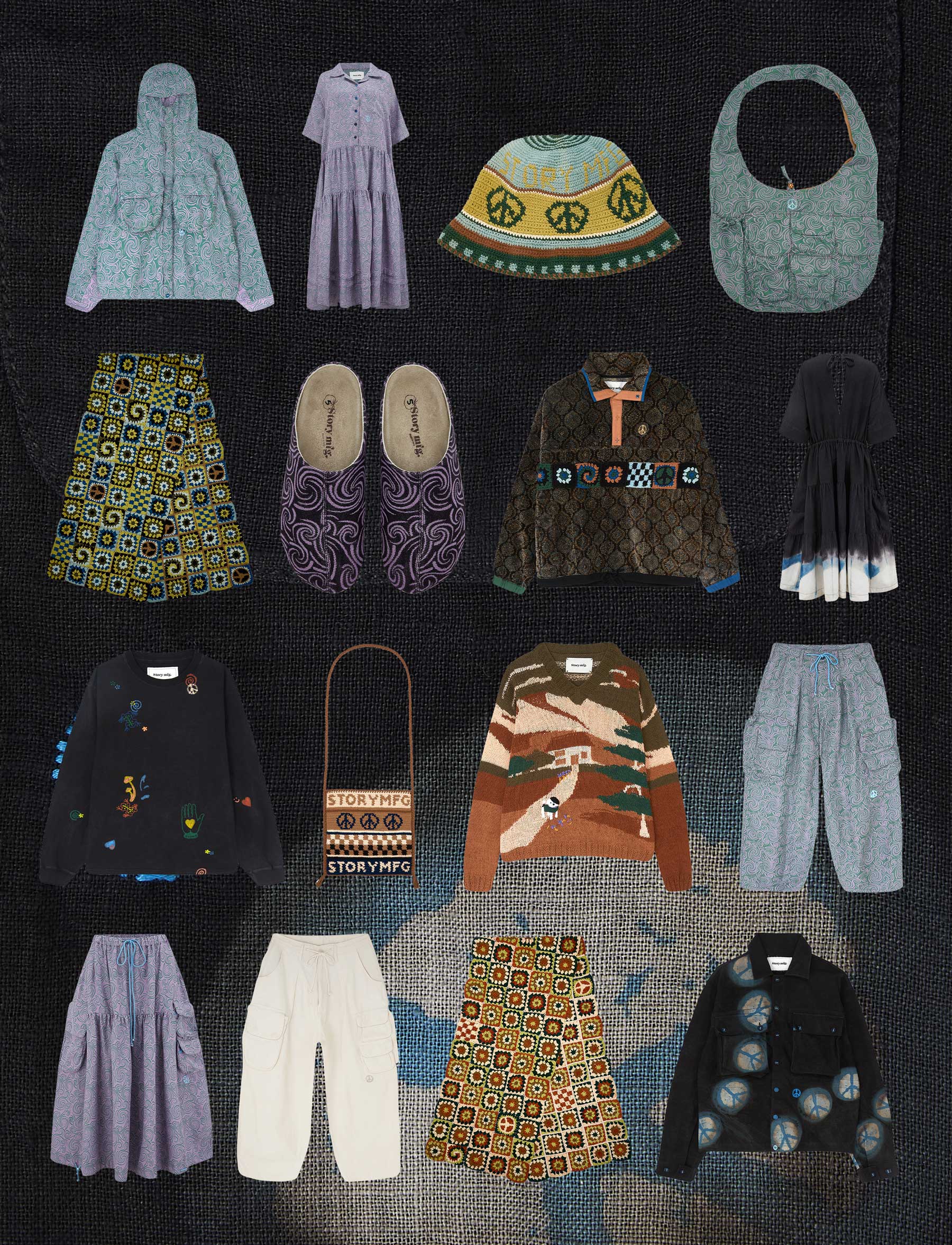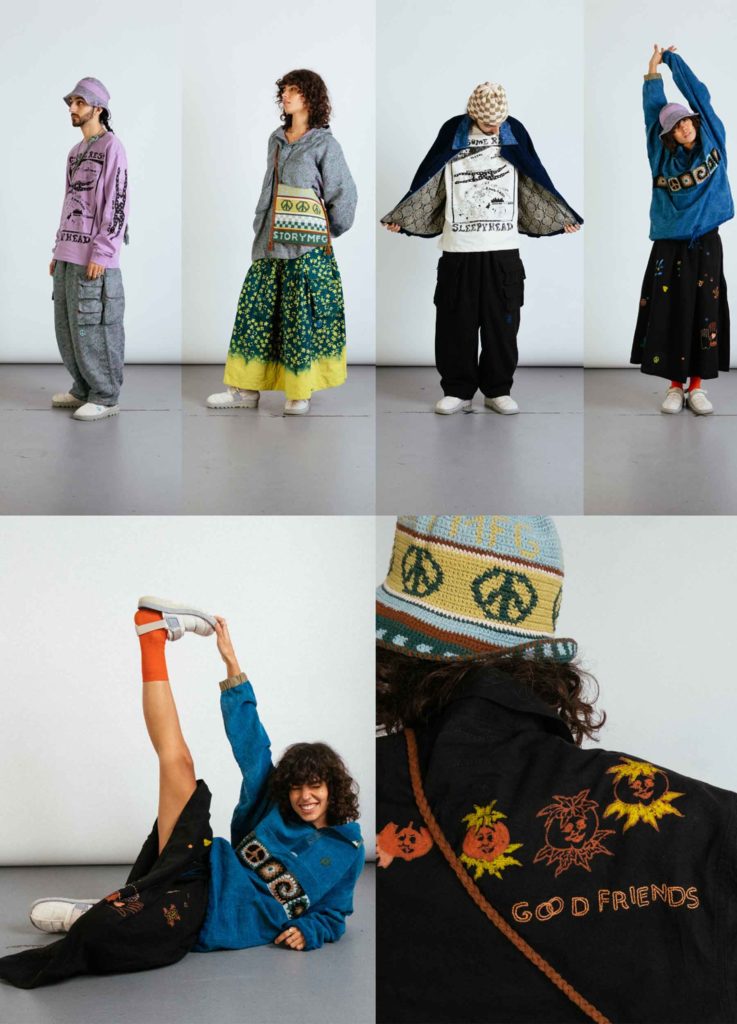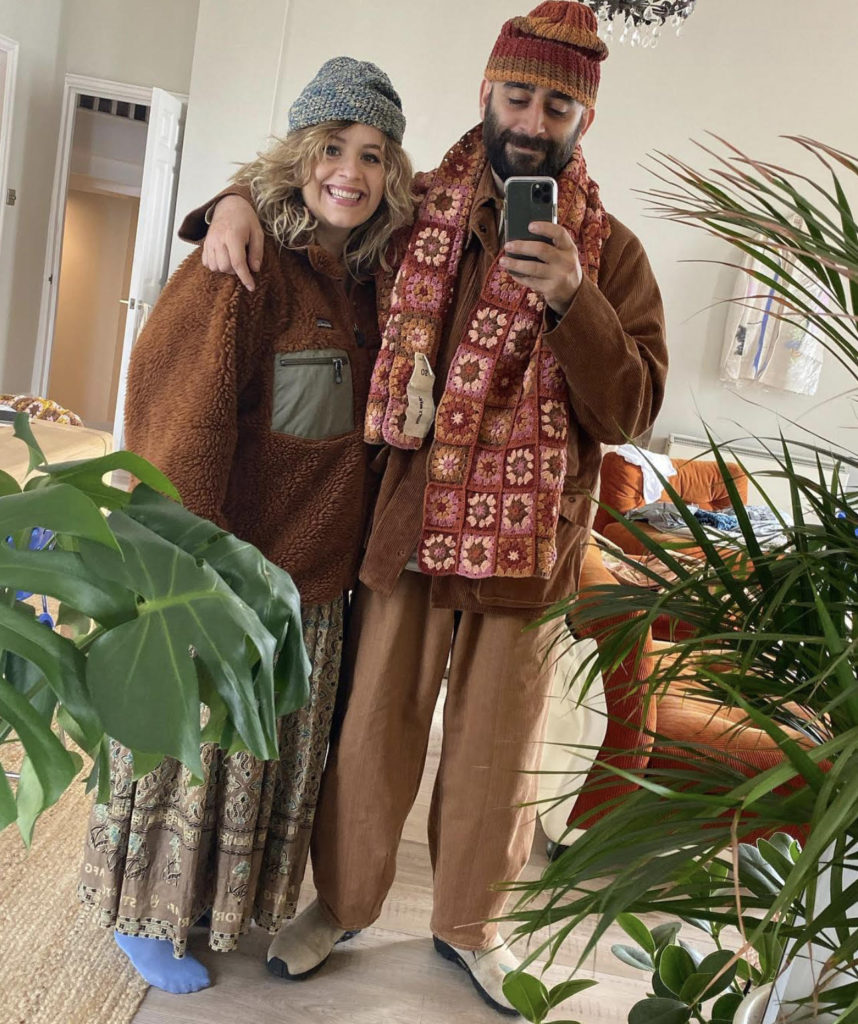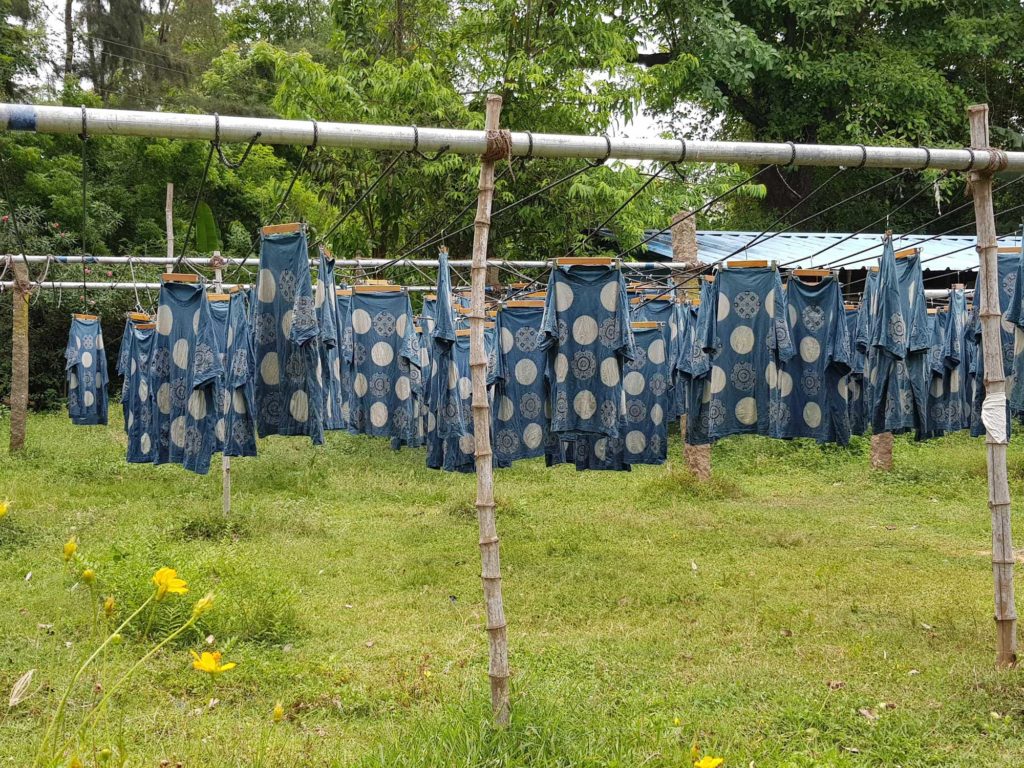
Issue 4 | Fall 2021
Feature
How Story Mfg. Took the Slow Route and Won
The brand’s collection of dreamy, heartfelt garments are made the right way. Slowly and sustainably.
Text: Jeff Ihaza
Art: Karen Nicole
The clothing brand Story mfg. was founded around 2013 by Saeed Al-Rubeyi and his wife Katy Al-Rubeyi in London. The pair started the company “out of a desire for a more authentic, fulfilling and kind approach to fashion,” according to their website’s “Manifesto.” What it means is that the brand’s collection of dreamy, heartfelt garments are made sustainably. Not sustainably in the Instagram influencer sense, but sustainably in the painstaking years of research to find the right cotton for a trouser kind of way.
As the world of fashion contends with people’s increasing anxieties around the environmental impact of their clothing, Story offers a framework for optimism, or at least for more honesty. The brand’s painstaking ethos around sourcing materials makes for an experience both sartorial and educational. Sustainability is more than a buzzword, and in Story’s carefully crafted garments, a way forward comes into view.
In conversation, Saeed sometimes describes his brand’s commitment to transparency as “fussy.” Another word might be brave.

You guys have been doing this brand for quite some time now?
It’s grown so slowly that I’m not sure where to say we started. We started in 2013. We made our first item of clothing in 2014, we made a jean, a jacket, and then a shirt, and then another jean. And then in 2015, we had a tiny, tiny, tiny, tiny, tiny little collection launch with one of our staff. And then we’ve been slowly growing each season ever since then.
In the years since you started, it seems as though every brand wants to project an image very similar to you guys?
Yeah. Some of them are doing it and some of them are just projecting it. But I think me and Katie had an inkling that we were moving towards this kind of attitude for a while and we just probably got on the train a little bit earlier. So we built the company on those things. I think the difficult thing for brands now is to retroactively try and change their systems and change where things are made, and how things are made. Whereas we from the beginning we were like, it’s important to us to know where such and such comes from. So from the beginning sourced it very, very, very slowly. It’s so difficult to do all that kind of stuff after the fact. And it’s so difficult to do even from the beginning. That’s why the company grew so slowly.
What was the process like?
The first thing we did was denim and it took us a year to do. And then at that point, we decided to do shirts, corduroy, T-shirts, and hats, but each one of those things to do it from scratch in a way that we do takes a long time. For corduroy, we had to wait two years. From the beginning, we wanted to do printed shirts. And I think it was like three years until we could make a printed shirt. And then we wanted knitwear. And I think it was five years until we had hand knitwear. It just takes a long time because we have to be fixed. Sometimes we’re lucky and we happen upon something.
How did you manage a release schedule?
So, our first season was denim, the second season was denim. The third season was denim and then overdye. And then the third season had a printed shirt in it. And then every season after that also has printed shirts. After the fourth season, we had prints, and denim, and knit. And then as the seasons go on, we take on one new process. And then now the season is seeming really fleshed out and high density, because it’s got knitting, and t-shirts, and prints and stuff, but we had to grow that really slowly.
What drives the sort of intensity? Why stick so rigidly to these values?
I think we’ve just come this far. We’ve gone all of this way without using a blank t-shirt from somewhere even if it seems great. We’ve had to make decisions several times where we’re like, we could just do this thing and it would be much easier, but at this point, it sort of minimizes all the hard work from before.
Do you guys feel at this point a certain responsibility to the customer base that you have for that transparency?
Yeah. But also to ourselves. Although it wasn’t before, I think it’s extremely fucking cool to behave this way. And to be good, and to be honest about the shortcomings too. And to take the slightly easier route would be easier in the short term, but you kind of kill that cool though. In the same way that companies make bad decisions about advertising or whatever may be for short-term gain, but then end up being quite uncool because of it. So in some ways sort of selfish to try and protect that.
That’s such a fun point. The idea of cool is so commodified, and now what makes something interesting, is what you’re describing, which is like a complete rejection of that.
Yeah. And also it’s just very uncool to be a shitbag, but maybe this is just my small circle, but most people I know would rather support something that is important to a cause, even in a small way.

As new parents, what kind of thoughts comes to your mind about preserving the planet for future generations?
It’s a place I can’t even go to in my mind. The people that feel the brunt of climate change are people in the global south. It’s so much worse other places on the planet. Places where fashion is produced, where cotton is grown, where raw materials are dumped, made and dumped.
My kid will feel the effects here in London with the food supply, but they’re not going to die of dehydration.
Fashion is interested in sustainability as a branding initiative, but it seems a lot harder to do it the right way.
I think the main issue is that there’s just very low education around sustainability. People on a PR team will know how to pitch it, and do the copy. And then designers will know how to design around the idea of sustainability. And I’ve written about this before on our website, there are so many designers that I meet who don’t know what a cotton plant looks like, or how it grows, or where it grows, and how it gets from being a plant to being in a garment.
And then if you don’t even know super basic information about the ingredients of the things you’re making you’re certainly not going to know about how important soil is or crop rotation, or where it grows, or different manufacturing processes, or waste management, or any of that stuff. So what I find a lot of the time is the people speaking loudest about sustainability issues have the lowest education on real sustainability
And they’re just making all these big statements and getting all this clout. But they don’t work in India, and Africa, and China. They don’t work directly with any of these people. I wouldn’t say it’s too extreme to say that the idea of sustainability itself is being colonized by people who don’t understand. Even the language around it is very colonized and unintelligible.

You mentioned how climate change is going to fall on the global south. Is that a consideration in how Story highlights parts of its process?
Yeah. And the whole thing is multi-layered. On the one hand, we need to make sure that we are collaborating with artisans instead of appropriating their work. So making sure that on a very basic level we don’t go somewhere and be like, “What do you do? Can we just buy it and use it and then move on?” That we work together based on their cultural craft and then our input as a company. Making sure that we never have anything that’s culturally important or religiously important or anything. That’s very easy for someone to do. To not be considerate of that kind of thing.
Making sure that we name check people when they want to be named checked and don’t name check them when they don’t want to be name-checked, which is equally important. A lot of time companies will tokenize who they work with, and sometimes they don’t want to be. Sometimes they just want to do their work.
It seems as though when it comes to thinking about just preserving the planet that systems of capital are a big issue?
Yeah. I don’t know how that one gets fixed, to be honest, but also trends and stuff like that do tend to start from more luxury places and then trickle down which is what they hope. I’d hope that luxury brands dealing with sustainability without the worry about price will then trickle down, and down. It does happen. You’ve seen it happen with the vegan food movement. When me and Katie went vegan, everybody was talking about how it’s really expensive to be vegan. There’s no food. There’s no stuff. And now it’s super cheap. There are vegan burgers and vegan versions of everything. And it’s much more doable.
That’s a very optimistic take and I think a good one.
I certainly am. It’s a bit of a difficult space because, with any kind of movement or political change, people who feel like they’re doing good quote-unquote work and then feel like other people are also doing it, but not doing it as well. Like constantly purity tests of each other. You recycle but use polyester so that’s not sustainable. And then like someone else is like, “Well, you do cotton.” And cotton you just loads of water so that’s not sustainable. So it’s a space where everybody is sort of talking about being optimistic and moving forward together, but there’s also so much infighting and calling bullshit on each other while big companies go unchecked for making absolutely no progress whatsoever.
And the brand has been growing. You guys are getting ready to open a store, right?
Yeah. I’m in it now, but as you can see it’s not ready. We haven’t had builders for ages, but yeah. We are growing. To me, the word sustainable doesn’t mean all that much apart from intentions, but in terms of the actual semantics of it our goal is to have a company that grows sustainably. And that we can grow very, very slowly and sustain the level that we’re at.
What are some of the things in store?
Well, we’re just continuing to grow the brand slowly. Working on a few different projects. And then the idea was always to have the company be a parent company to a lot of different projects. And Story is very strict. It’s all-natural dyes, natural materials, et cetera, et cetera. So we would never make an outdoors jacket made from recycled synthetic materials, et cetera. Even though that presents interesting ideas. So the plan was always to birth these other small brands that have a specific focus.
Next year, we’re finally launching another one called Gentle Fullness, which is very much Story, but we’ll have more synthetics and maintain the story framework but approach things a little bit differently in materials.
This story appears in the new issue of Secret, available now.